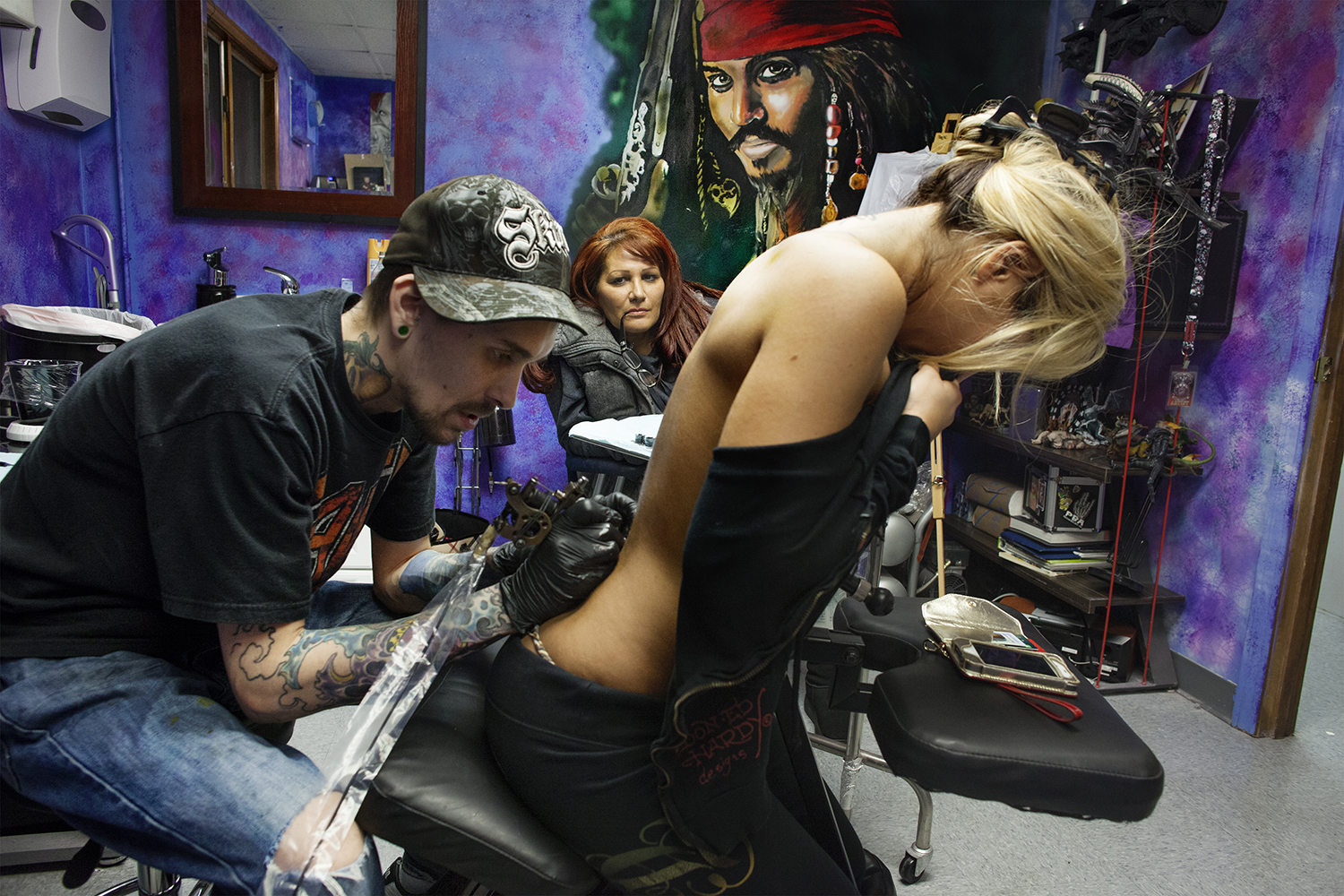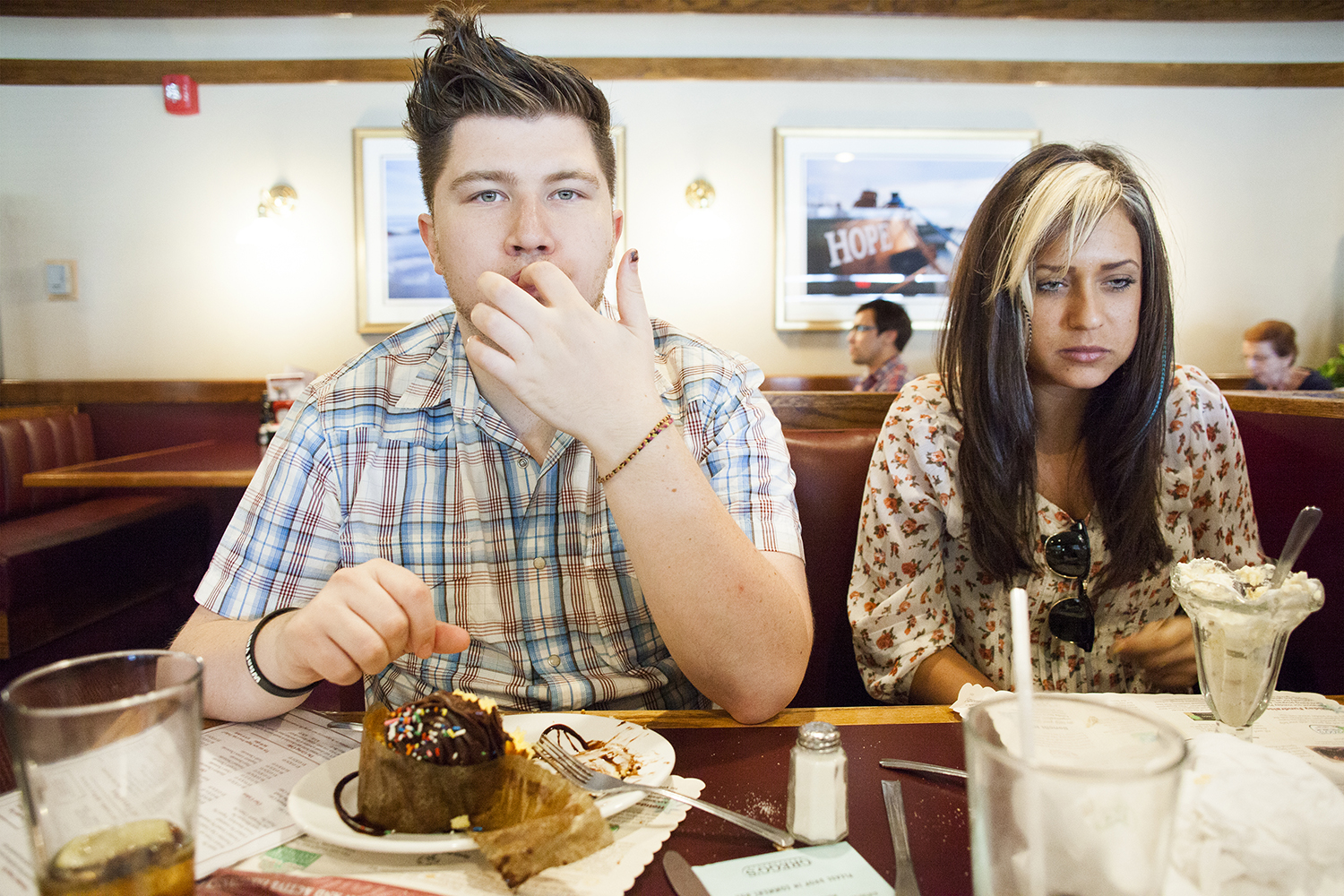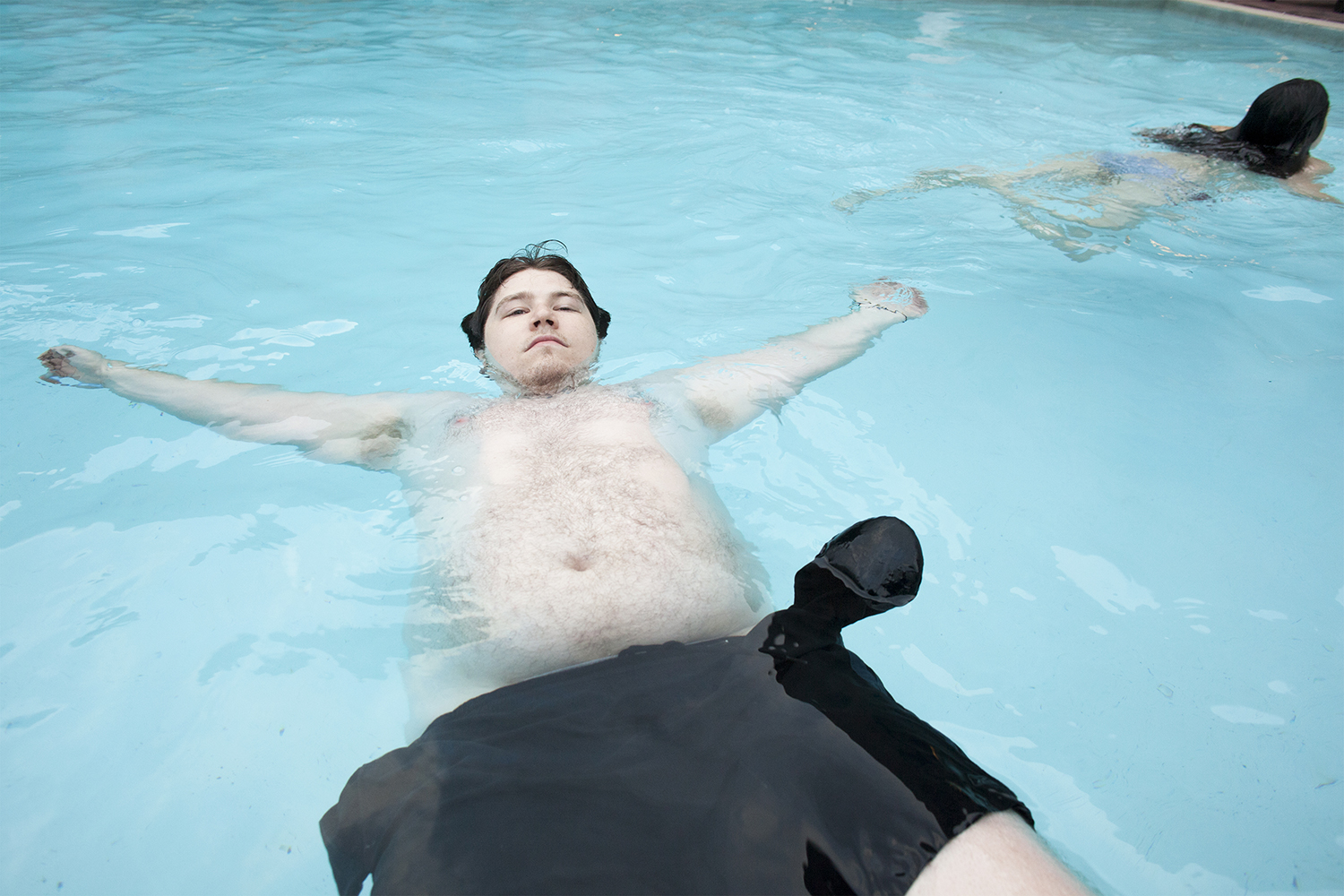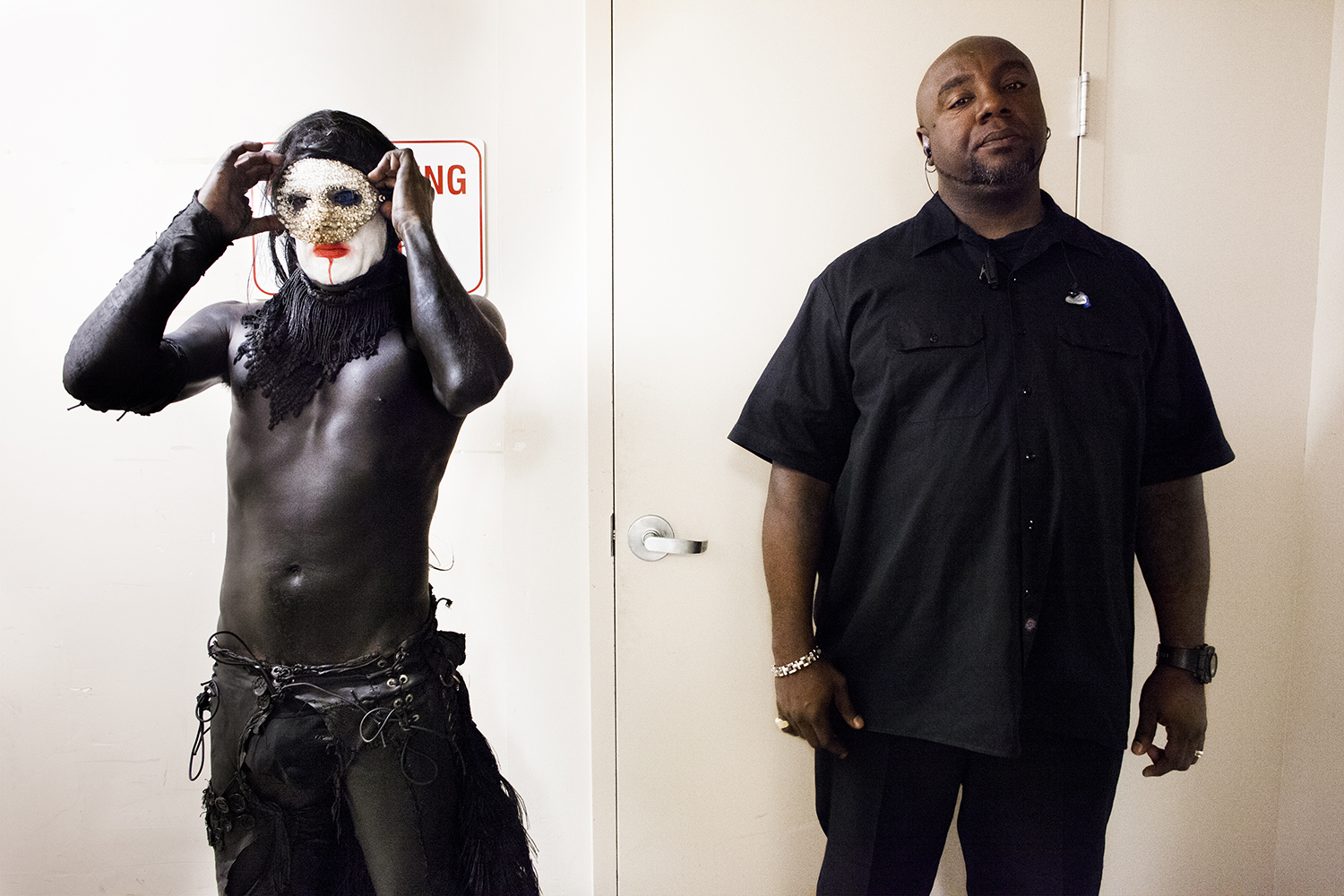Rock music photographer Paris Visone has traveled the globe with the likes of Marilyn Manson, Godsmack and New Found Glory, among other big name acts. Her intimate images of the musicians she photographs have been featured in Rolling Stone and Spin. Her work has been shown internationally in solo and group exhibitions.
But for her debut photo book, she returned to a subject a lot closer to home. Well, actually, it is home for Visone.
In For Real, which was recently published by Peanut Press, Visone turns her lens toward her family — immediate and extended. Some of whom also appeared in her celebrated documentary project, “Gender Roles and Appearance,” which received the Getty Images Editorial Photography grant in 2010.
The work bridges the divide between her commercial work and fine art. For Real blurs the line between image and fame as the Boston-based Visone mixes intimate portraits of famous musicians with photographs of her family. In For Real, she poses the question: Who is the rockstar? Visone captures personal moments of the famous, while showing her family as stars, all treated with respect and love.
In this interview with Focus on the Story, Visone discusses her work and the different worlds she transverses from family to fame. All of the images shown are from For Real.
East Coast rock photographer Paris Visone’s debut book, For Real, is available at Peanut Press.
Mike Lee: How did this begin? What sparked your interest in photography?
Paris Visone: When I was 11 years old I was watching Entertainment Tonight with my mom and they has a segment where they were spending a day in the life with Hanson, the rock band. During the day they were doing a photo shoot and were throwing leaves around, having a great time. So that’s when it clicked. I need to become a photographer so I can hang out with Hanson. (I actually hung out with Hanson a few months ago so — life complete. They were awesome.)
I started setting up my sister and cousins as if they were a band, and it all developed from there.

Lee: Could you tell us about your series, “Gender Roles and Appearance?” What was the genesis of that project, and what was the response?
Visone: That project sort of stemmed from my normal shooting, which was just photographing everyone around me, sort of documentary style. While I was in college people told me over and over again that I needed a purpose to photograph. I was reluctant, so I just kept on shooting the way I always have, and then everyone started noticing a theme. And that’s when Gender Roles and Appearance started. I sort of leaned into it, but then I found myself catering to it. It really clouded my way of shooting. I like how the series lent my work to actually having a solid statement, but it was also constricting and changing the way I shot. It was a nice for a little bit, but I still prefer more of a free flow.
Lee: Based the Gender Roles series, how much of what you learned from that experience influences your professional work, particularly when working with bands on tour and behind-the-scenes?
Visone: Shooting my family prepared me for the fact that people like to look good in photos. Or at least what they think looks good. So it’s a never ending battle.
I think the largest advantage of shooting my family first is that I wasn’t afraid to get in peoples faces and take photos. I know a lot of the time people are intimidated to take out their camera in an intimate setting. I never had that issue and I can thank my family for that. But actually come to think of it, they were always telling me to get the camera out of their face. so maybe it just gave me thicker skin.
Lee: When shooting concert performance what is the priority? Also how vital is the role of a photographer/videographer to touring groups now?
Visone: The priority changes from show to show. Being on the road and shooting the same show night after night can be challenging. I always love to get the huge shots, the massive crowds, the pyro and the high-energy moments. But then there are some moments on stage that are sometimes very quiet. And those are usually my favorite. It all depends on the vibe of the show.
The role of photographer/videographer on tour now is becoming the norm. It is a good and bad thing in my opinion. Don’t get me wrong, I love that I have a consistent job. But I also miss the days that rock stars were still rock stars and I didn’t know every detail of their lives.
I guess you can blame it more on social media than photographers in general. But I do miss the days where if you wanted to see behind the scenes photos of bands, you would need to buy a book where all the images were edited and sequenced. There is something to say about taking time to create art compared to just throwing something online. Not to say people aren’t doing it well. Just when this is expected to be produced every single day to keep people entertained, its inevitability going to get watered down.
Lee: Talk about For Real, and how the concept of juxtaposing the work with your family came about.
Visone: When I first started touring I didn’t look at photographing bands any differently than I do my family. Everyone is just a real person and that is what I try to show while photographing. I believe that the moments where someone is just sitting at a table having dinner is just as important as someone lying with a kangaroo. In fact, I believe the more mundane instances shape your life more than the extreme.
For me, For Real is an honest look at life.
Mike Lee is a photographer, labor editor, journalist and writer based in New York. His photography was featured in several group shows in the last several years. His short fiction is published in a myriad of journals, including The Avenue, The Ampersand Review, Reservoir, Ghost Parachute and The Airgonaut. You can see more of his work on his website.







